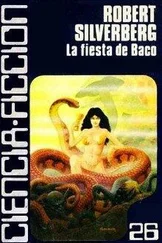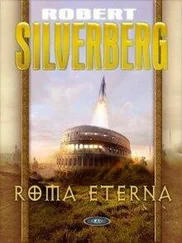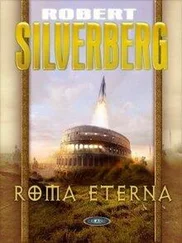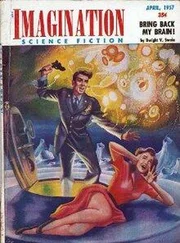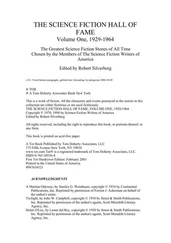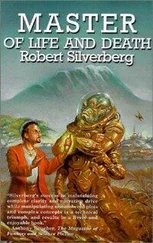Robert Silverberg - Death Do Us Part
Здесь есть возможность читать онлайн «Robert Silverberg - Death Do Us Part» весь текст электронной книги совершенно бесплатно (целиком полную версию без сокращений). В некоторых случаях можно слушать аудио, скачать через торрент в формате fb2 и присутствует краткое содержание. Год выпуска: 2014, ISBN: 2014, Издательство: Subterranean Press, Жанр: Фантастика и фэнтези, на английском языке. Описание произведения, (предисловие) а так же отзывы посетителей доступны на портале библиотеки ЛибКат.
- Название:Death Do Us Part
- Автор:
- Издательство:Subterranean Press
- Жанр:
- Год:2014
- ISBN:978-1-59606-705-9
- Рейтинг книги:5 / 5. Голосов: 1
-
Избранное:Добавить в избранное
- Отзывы:
-
Ваша оценка:
- 100
- 1
- 2
- 3
- 4
- 5
Death Do Us Part: краткое содержание, описание и аннотация
Предлагаем к чтению аннотацию, описание, краткое содержание или предисловие (зависит от того, что написал сам автор книги «Death Do Us Part»). Если вы не нашли необходимую информацию о книге — напишите в комментариях, мы постараемся отыскать её.
Death Do Us Part — читать онлайн бесплатно полную книгу (весь текст) целиком
Ниже представлен текст книги, разбитый по страницам. Система сохранения места последней прочитанной страницы, позволяет с удобством читать онлайн бесплатно книгу «Death Do Us Part», без необходимости каждый раз заново искать на чём Вы остановились. Поставьте закладку, и сможете в любой момент перейти на страницу, на которой закончили чтение.
Интервал:
Закладка:
The thought of having the same husband for all the vast expanse of time that is the rest of her life, is a little disturbing—it gives her a sense of walls closing in, and closing and closing and closing—but the thought of leaving Leo is even worse. Or of his leaving her. Maybe she isn’t truly in love with him, at any rate not as she imagines love at its deepest to be, but she is happy with him. She wants to stay with him. She can’t really envision parting from him and moving on to someone else.
But of course she knows that she will. Everybody does, in the fullness of time.
Everybody.
Leo is a sand-painter. Sand-painting is his fifteenth or twentieth career. He has been an architect, an archaeologist, a space-habitats developer, a professional gambler, an astronomer, and a number of other disparate and dazzling things. He reinvents himself every decade or two. That’s as necessary to him as Process itself. Making money is never an issue, since he lives on the compounding interest of investments set aside centuries ago. But the fresh challenge—ah, yes, always the fresh challenge—!
Marilisa hasn’t entered on any career path yet. It’s much too soon. She is, after all, still in her first life, too young for Process, merely in the Prep stage yet. Just a child, really. She has dabbled in ceramics, written some poetry, composed a little music. Lately she has begun to think about studying economics or perhaps Spanish literature. No doubt her actual choice of a path to follow will be very far from any of these. But there’s time to decide. Oh, is there ever time!
Just after the turn of the year she and Leo go to Antibes to attend the unveiling of Leo’s newest work, commissioned by Lucien Nicolas, a French industrialist. Leo and Lucien Nicolas were schoolmates, eons ago. At the airport they embrace warmly, almost endlessly, like brothers long separated. They even look a little alike, two full-faced square-jawed dark-haired men with wide-flanged noses and strong, prominent lips.
“My wife Marilisa,” Leo says finally.
“How marvelous,” says Lucien Nicolas. “How superb.” He kisses the tips of his fingers to her.
Nicolas lives in a lofty villa overlooking the Mediterranean, surrounded by a lush garden in which the red spikes of aloes and the yellow blooms of acacias stand out dazzlingly against a palisade of towering palms. The weather, this January day, is mild and pleasant, with a light drizzle falling. The industrialist has invited a splendid international roster of guests to attend the unveiling of the painting; diplomats and jurists, poets and playwrights, dancers and opera singers, physicists and astronauts and mentalists and sculptors and seers. Leo introduces Marilisa to them all. In the antechamber to the agate dining hall she listens, bemused, to the swirl of conversations in half a dozen languages. The talk ranges across continents, decades, generations. It seems to her that she hears from a distance the names of several of Leo’s former wives invoked—Syantha, Tedesca, Katrin?—but possibly she is mistaken.
Dinner is an overindulgent feast of delicacies. Squat animated servitors bring the food on glistening covered trays of some exotic metal that shimmers diffractively. After every third course a cool ray of blue light descends from a ceiling aperture and a secondary red radiance rises from the floor: they meet in the vicinity of the great slab of black diamond that is the table, and a faint whiff of burning carbon trickles into the air, and then the diners are hungry all over again, ready for the next delight.
The meal is a symphony of flavors and textures. The balance is perfect between sweet and tart, warm and cool, spicy and bland. A pink meat is followed by a white one, and then by fruit, then cheese, and meat again, a different kind, and finer cheeses. A dozen wines or more are served. An occasional course is still alive, moving slowly about its plate; Marilisa takes her cue from Leo, conquers any squeamishness, traps and consumes her little wriggling victims with pleasure. Now and then the underlying dish is meant to be eaten along with its contents, as she discovers by lagging just a moment behind the other guests and imitating their behavior.
After dinner comes the unveiling of the painting, in the atrium below the dining-hall. The guests gather along the balcony of the dining-hall and the atrium roof is retracted.
Leo’s paintings are huge rectangular constructions made of fine sparkling sand of many colors, laid out within a high border of molten copper. The surfaces of each work are two-dimensional, but the cloudy hint of a third dimension is always visible, and even that is only the tip of an underlying multidimensional manifold that vanishes at mysterious angles into the fabric of the piece. Down in those churning sandy depths lie wells of color with their roots embedded in the hidden mechanisms that control the piece. These wells constantly contribute streams of minute glittering particles to the patterns at the surface, in accordance with the changing signals from below. There is unending alteration; none of Leo’s pieces is ever the same two hours running.
A ripple of astonishment breaks forth as the painting is revealed, and then a rising burst of applause. The pattern is one of interlaced spirals in gentle pastels, curvilinear traceries in pink and blue and pale green, with thin black circles surrounding them and frail white lines radiating outward in groups of three to the vivid turquoise borders of the sand. Leo’s friends swarm around him to congratulate him. They even congratulate Marilisa. “He is a master—an absolute master!” She basks in his triumph.
Later in the evening she returns to the balcony to see if she can detect the first changes in the pattern. The changes, usually, are minute and subtle ones, requiring a discriminating eye, but even in her short while with Leo she has learned to discern the tiniest of alterations.
This time, though, no expertise is required. In little more than an hour the lovely surface has been significantly transformed. A thick, jagged black line has abruptly sprung into being, descending like a dark scar from upper right to lower left. Marilisa has never seen such a thing happen before. It is like a wound in the painting: a mutilation. It draws a little involuntary cry of shock from her.
Others gather. “What does it mean?” they ask. “What is he saying?”
From someone in African tribal dress, someone who nevertheless is plainly not African, comes an interpretation: “We see the foretelling of schism, the evocation of a transformation of the era. The dark line moves in brutal strokes through the center of our stability-point. There, do you see, the pink lines and the blue? And then it drops down into the unknown dominion beyond the painting’s eastern border, the realm of the mythic, the grand apocalyptic.”
Leo is summoned. He is calm. But Leo is always calm. He shrugs away the urgent questions: the painting, he says, is its own meaning, not subject to literal analysis. It is what it is, nothing more. A stochastic formula governs the changes in his works. All is random. The jagged black line is simply a jagged black line.
Music comes from another room. New servitors appear, creatures with three metal legs and one telescoping arm, offering brandies and liqueurs. The guests murmur and laugh. “A master,” they tell Marilisa once again. “An absolute master!”
She likes to ask him about the far-away past—the quaint and remote 23rd century, the brusque and dynamic 24th. He is like some great heroic statue rising up out of the mists of time, embodying in himself first-hand knowledge of eras that are mere legends to her.
“Tell me how people dressed, back then,” she begs him. “What sorts of things they said, the games they played, where they liked to go on their holidays. And the buildings, the architecture: how did things look? Make me feel what it was like: the sounds, the smells, the whole flavor of the long-ago times.”
Читать дальшеИнтервал:
Закладка:
Похожие книги на «Death Do Us Part»
Представляем Вашему вниманию похожие книги на «Death Do Us Part» списком для выбора. Мы отобрали схожую по названию и смыслу литературу в надежде предоставить читателям больше вариантов отыскать новые, интересные, ещё непрочитанные произведения.
Обсуждение, отзывы о книге «Death Do Us Part» и просто собственные мнения читателей. Оставьте ваши комментарии, напишите, что Вы думаете о произведении, его смысле или главных героях. Укажите что конкретно понравилось, а что нет, и почему Вы так считаете.


